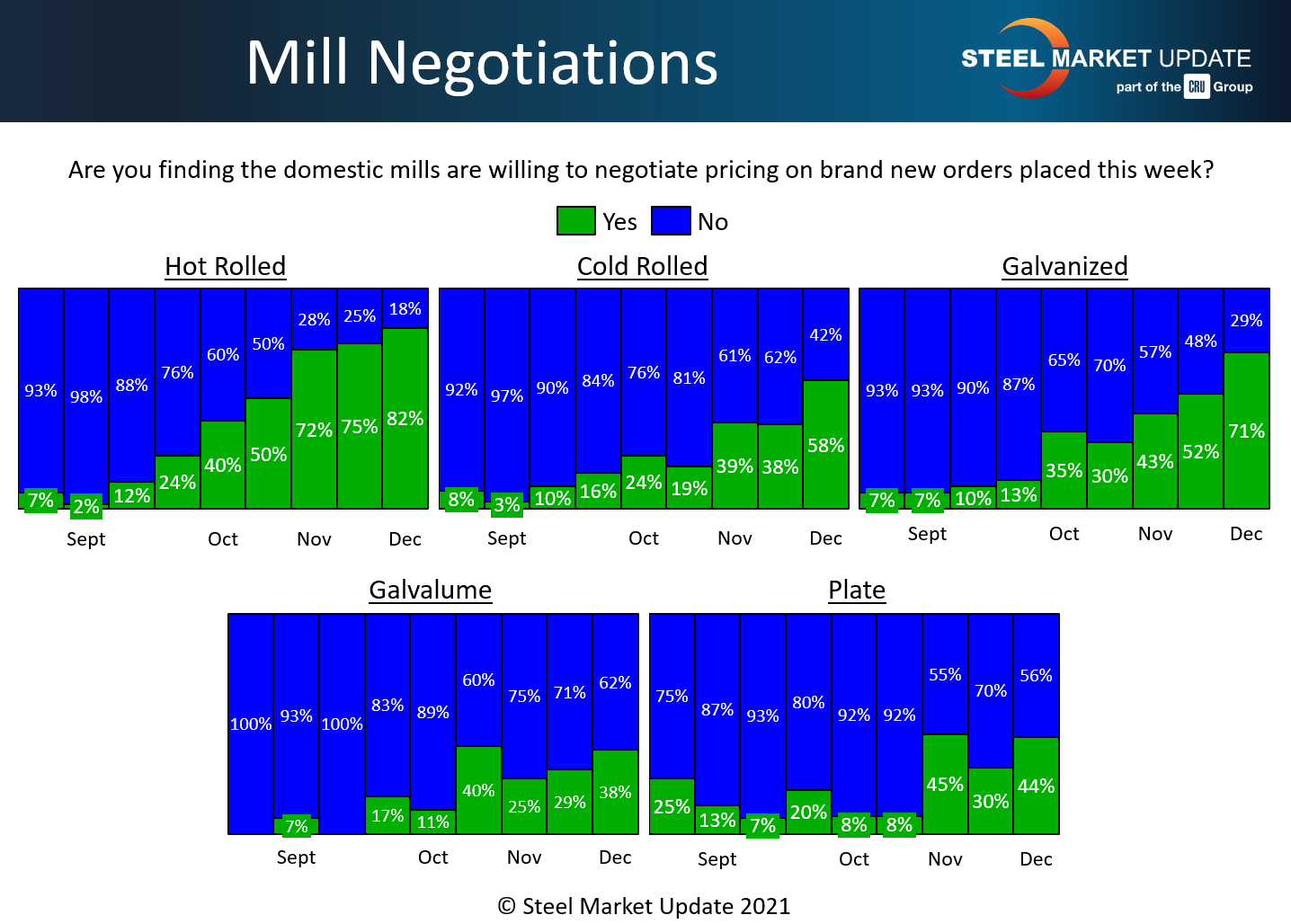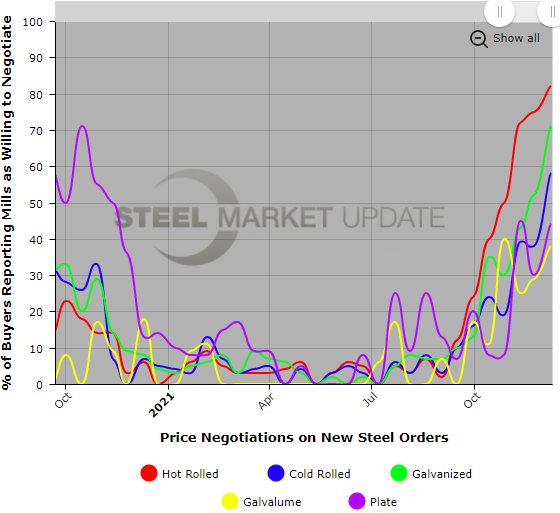SMU Data and Models

Steel Mill Negotiations: Pendulum Swinging the Other Way
Written by Tim Triplett
December 9, 2021
The pendulum has passed bottom and finally begun to swing the other way in price negotiations. Steel mills no longer hold a dominant bargaining position over spot buyers. That shift is consistent with the shortening lead times and declining prices reported by Steel Market Update.
SMU asks buyers every two weeks whether mills are willing to talk price on spot orders. Majorities of the service center and manufacturing executives responding to SMU’s survey this week reported mills now willing to offer deals on most products, with the possible exception of Galvalume and plate. About 82% of hot rolled buyers, 71% of galvanized buyers and 58% of cold rolled buyers said mills are now open to negotiating to land an order.
As recently as September, there was little or no negotiation taking place on most products as demand continued to outpace supplies – meaning mills could basically dictate the price. One has to search SMU data as far back as the buyers’ market of August 2020, when the economy was still emerging from the initial pandemic shutdowns, to find percentages similar to the chart below.
The bargaining position of steel buyers is likely to strengthen further in the coming weeks if mill lead times and steel prices continue to decline as forecast.
What Respondents Had to Say
“Some negotiation, depending on the mill.”
“Mild negotiation, but the major mills understand this is a temporary situation.”
“They are negotiating, but more so on the extras than the base price.”
“Yes, but they are still way off the import price. There’s still too big a gap right now, like $140/ton.”
“There’s no real negotiation yet, but you can tell they want some tons, especially for Q1.”


By Tim Triplett, Tim@SteelMarketUpdate.com

Tim Triplett
Read more from Tim TriplettLatest in SMU Data and Models

SMU Scrap Survey: Sentiment Indices rise
Both current and future scrap sentiment jumped this month, though survey participants reported responses before key trade news was announced.

SMU Survey: Sentiment splits, buyers have better view of future than the present
SMU’s Steel Buyers’ Sentiment Indices moved in opposite directions this week. After rebounding from a near five-year low in late June, Current Sentiment slipped again. At the same time, Future Sentiment climbed to a four-month high. Both indices continue to show optimism among buyers about their company’s chances for success, but suggest there is less confidence in that optimism than earlier in the year.

SMU scrap market survey results now available
SMU’s ferrous scrap market survey results are now available on our website to all premium members. After logging in at steelmarketupdate.com, visit the pricing and analysis tab and look under the “survey results” section for “ferrous scrap survey” results. Past scrap survey results are also available under that selection. If you need help accessing the survey results […]

SMU flat-rolled market survey results now available
SMU’s latest steel buyers market survey results are now available on our website to all premium members. After logging in at steelmarketupdate.com, visit the pricing and analysis tab and look under the “survey results” section for “latest survey results.” Past survey results are also available under that selection. If you need help accessing the survey results, or if […]

SMU Survey: Sheet lead times stabilize, plate contracts
Mill lead times for sheet products were steady to slightly longer this week compared to our late June market check, while plate lead times contracted, according to steel buyers responding to this week’s market survey.
